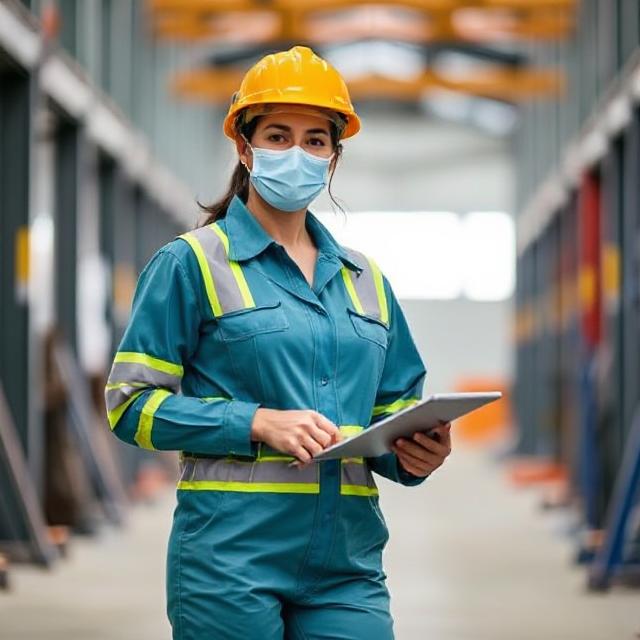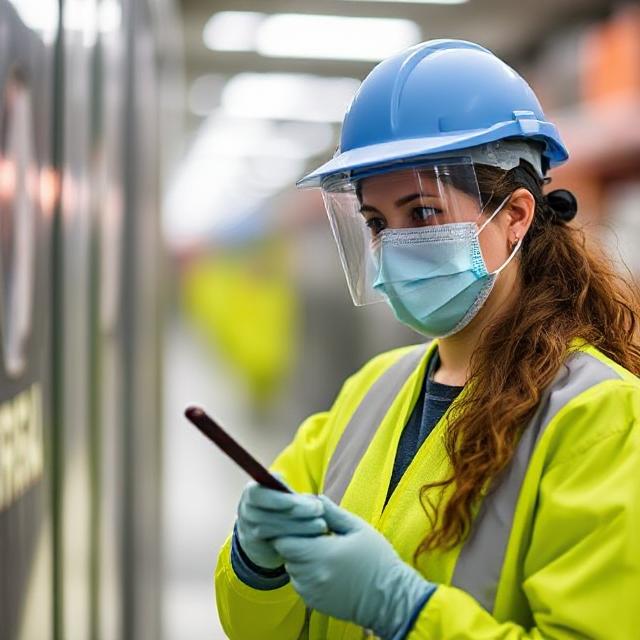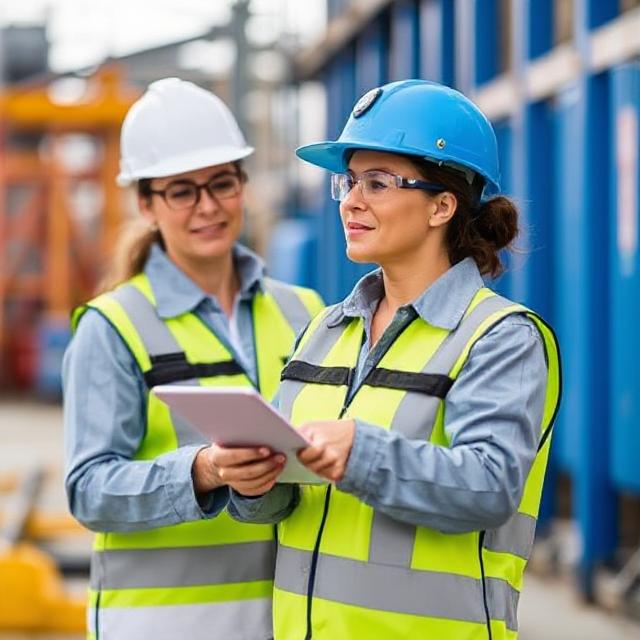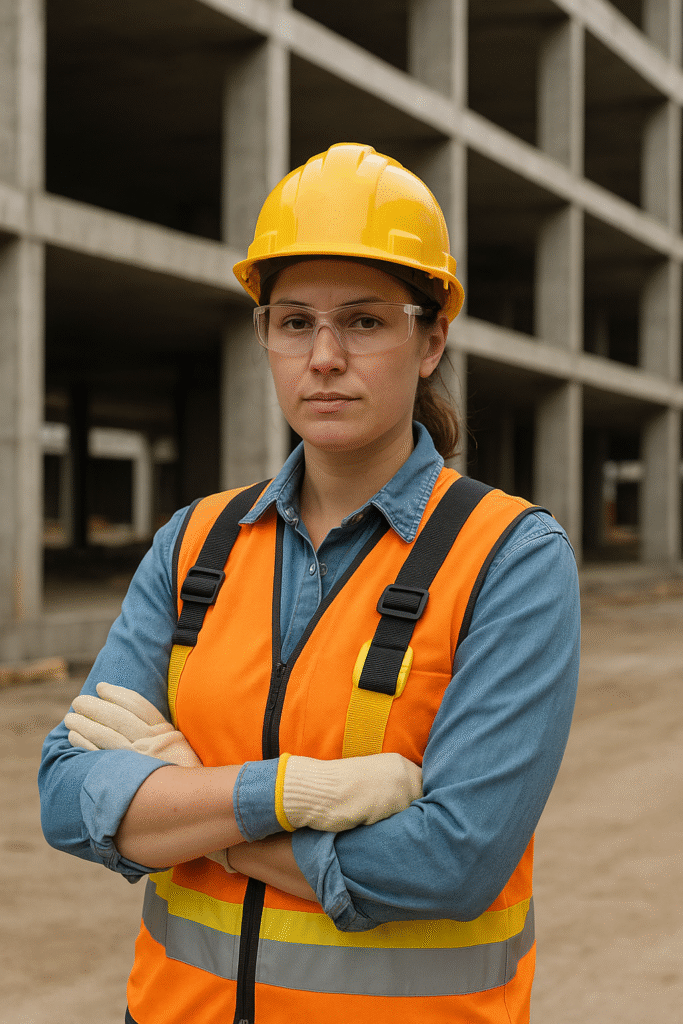Tailored PPE Solutions for Women in Construction are not just a matter of comfort—they’re a matter of safety, dignity, and equality on the job site.
As the construction industry welcomes more women into its workforce, it’s time for safety equipment manufacturers and employers to catch up.

Ill-fitting personal protective equipment (PPE) poses significant risks, from reduced mobility to inadequate protection, making gender-specific gear not just beneficial but essential.
- The Rise of Women in Construction
- Why Standard PPE Falls Short for Women
- Real-World Examples of Risk
- Key Areas That Require Tailored PPE
- Industry Guidelines and Resources
- The Business Case for Tailored PPE Solutions
- Moving Forward: A Culture Shift in PPE Procurement
- Tailored PPE in Action
- Final Thoughts: Tailored PPE Solutions for Women in Construction
The Rise of Women in Construction
Over the last decade, the number of women entering construction roles has steadily increased. According to Statistics Canada, women now make up approximately 13% of the construction workforce, with higher concentrations in trades, project management, and inspection roles.
While this marks progress, the industry still struggles with providing inclusive work environments—starting with the very gear meant to protect workers.
Tailored PPE solutions for women in construction are a foundational step toward not just safety compliance but workforce equity.
Why Standard PPE Falls Short for Women
Most PPE on the market has been traditionally designed based on the average male body. As a result, women face the following challenges:

1. Poor Fit
Overly large gloves, loose-fitting harnesses, and long coveralls can hinder movement and increase the likelihood of accidents.
2. Compromised Protection
Improperly sized respiratory masks may not seal correctly, reducing effectiveness against dust and fumes. Loose clothing may snag on equipment, posing entanglement hazards.
3. Discomfort and Fatigue
Ill-fitting boots or excessively heavy helmets can lead to long-term musculoskeletal issues, fatigue, and reduced focus—directly impacting job performance and safety.
Real-World Examples of Risk
Consider a female electrician climbing scaffolding with a safety harness that doesn’t sit correctly due to her shorter torso. In the event of a fall, the force may distribute unevenly across the body, increasing the risk of injury.

Or a female laborer operating in a dusty demolition zone with a face mask that doesn’t seal well—she’s unknowingly exposed to hazardous particulates despite following protocols.
These are not rare scenarios. They are daily realities for many women on site who lack tailored PPE solutions for women in construction.
Key Areas That Require Tailored PPE
To improve safety and performance, manufacturers and employers must consider the following PPE categories for gender-specific design:
✅ Protective Clothing
- Options should account for different bust-to-waist ratios and overall body proportions.
- Adjustable waistlines and sleeve lengths help achieve better fit and functionality.
✅ Safety Harnesses
- Designs that consider bust and torso proportions ensure proper anchoring and fall protection.
✅ Gloves
- Smaller glove sizes with narrower fingers provide better dexterity and reduce strain.
✅ Respirators and Masks
- Gender-inclusive face molds ensure proper sealing and filtration, critical in high-dust environments.
✅ Safety Footwear
- Women’s feet typically have different arch shapes and narrower heels. Properly fitted boots prevent blisters, fatigue, and ankle injuries.
Industry Guidelines and Resources
Organizations like the Canadian Centre for Occupational Health and Safety (CCOHS) and OSHA emphasize that PPE must fit the worker properly. In fact, OSHA mandates in 29 CFR 1910.132 that PPE must be appropriate for the user—a principle often overlooked when women are issued generic “unisex” gear.
Internal workplace policy should reflect this by:
- Conducting PPE fit assessments.
- Offering a range of sizes and gender-specific options.
- Including women in procurement decisions.
For organizations in Canada, referencing OHSE.ca or other local safety organizations for supplier recommendations is a proactive step.
The Business Case for Tailored PPE Solutions
Investing in tailored PPE solutions for women in construction goes beyond compliance—it enhances productivity, retention, and morale. When workers feel seen and supported, they are more likely to stay engaged and loyal.
Additionally, PPE that fits properly leads to:
- Fewer injuries and sick days.
- Improved focus and performance.
- Higher participation rates in safety programs.
Employers looking to improve DEI (Diversity, Equity, Inclusion) in their safety programs should consider tailored PPE as an early and effective win.
Moving Forward: A Culture Shift in PPE Procurement
To truly make worksites safer and more inclusive, companies must re-evaluate their PPE procurement strategies. Here’s how:
- Engage Women in the Decision-Making Process
- Allow women to test and give feedback on gear before bulk orders.
- Offer Multiple PPE Options
- Partner with suppliers who offer women-specific lines.
- Educate Supervisors and Safety Officers
- Train them on why PPE fit is not just a comfort issue but a safety issue.
Tailored PPE in Action
Brands such as PIP®, MSA®, and Honeywell now offer gender-specific PPE, and forward-thinking employers are incorporating these into their standard inventory.
By partnering with vendors who understand anatomical differences, companies reduce risk and lead the charge in modern safety practices.

Final Thoughts: Tailored PPE Solutions for Women in Construction
As women take on more roles in construction, it’s time for safety gear to reflect this shift. Tailored PPE solutions for women in construction are not a luxury—they are a necessity for compliance, performance, and equity.
Employers who invest in this area will not only protect their workforce but also strengthen their reputation as inclusive, forward-thinking organizations.

No comments yet